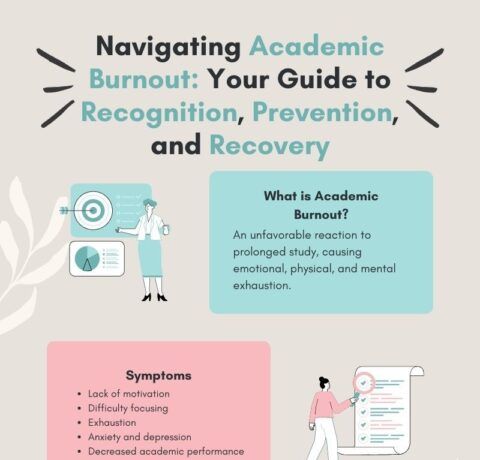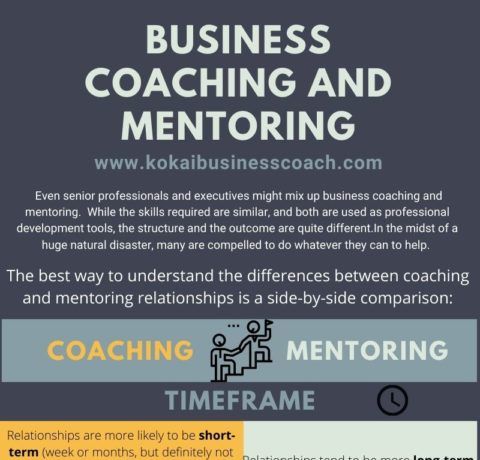10 Myths About Professional Training
Professional training is one of the most valuable activities an organisation can do to foster employee motivation, maximise performance and, ultimately, grow the business. For individuals, training can be a springboard to a promotion, a career-change and job satisfaction. So why are there so many objections to professional training?
10 Myths About Professional Training Infographic
So there you have it: the most common myths about professional training debunked. The stats above speak for themselves, but let’s look a little closer into what they’re actually telling us about viable professional training options and how to make them work for you and/or your organisation.
Myth #1: “Only large-scale companies have access to training."
This is simply not the case with a reported 88% of small businesses offer training to all (if not the majority) of their employees. These small businesses report a higher rate of revenue growth, with 74% reporting increased revenue within 18 months. But how does your company become a part of that stat?
Training comes in all shapes and sizes - and doesn’t have to mean expensive classroom courses or lots of time away from the office. With flexible and cost-effective options such as e-learning and in-house training, small businesses can enjoy the benefits of professional training. Plus, there are other ways to train: job-shadowing, knowledge-sharing sessions and sending one delegate on a course to disseminate the information learned throughout the business. Do some investigating - you’ll be surprised by the variety of options available.
Myth #2: "Becoming certified won't help me find a job."
Let’s take a look at the stats...
- 89% of employers think IT-certified individuals tend to perform better than non-IT-certified individuals in similar job roles
- 41% of respondents to an AMA survey of projects said that being PMP certified helped them get a job. 68% of respondents had this certification.
- 42% of companies either prefer or require HR certification in potential employees.
Whilst it’s true that certifications are more popular and preferred in certain job roles, it is almost always the case that a certification in any profession will be favoured in a job application. Employers want an applicant’s C.V. to demonstrate that they have the skills needed to do the job required. Those with a certification in the role they are applying to do will not only demonstrate their commitment to role progression, but that they’ve learned the skills required for their role to a particular standard - one the employer is looking for.
Myth #3: "Professional development isn't a priority."
There is often the perception among employees that executives don’t value their professional development. On the contrary, 80% of L&D professionals agree that developing employees is top-of-mind for the executive team. This is reinforced by the fact that 24% of companies that offer comprehensive training enjoy a 24% higher profit margin than those who spend less on training.
Yet, learning and development budgets don’t always reflect how valued professional development is. Individuals should express their desire for training to their line managers, who, in turn, should make a business case for training to L&D teams or top management. Making professional development a priority has to work both ways in order for it to happen - from both employees and executives.
Myth #4: "Training isn't modern or digital enough."
There is often an assumption that professional development training is only classroom-based and too traditional to reflect and complement today’s rapidly digitising world. The workforce of today is increasingly tech savvy - with more people entering the job market having been brought up in the internet/smartphone era. By 2025, millennials will make up 75% of the workforce. But training has evolved to suit this - and is continually evolving for the modern workforce and workplace. From microlearning videos to webinars, mobile learning to e-courses, there is a whole range of modern, digital training to suit all styles of learning. In fact, 67% of people now use mobile devices to access learning.
Myth #5: "e-learning is not as recognised as in-person training."
Despite the popularity of e-learning, there is still some concern that it doesn’t hold as much value as face-to-face, classroom training. However, the focus is on the wrong aspect here. People learn in different ways and self-paced e-learning may actually improve learning retention for those who struggle in large classroom groups.
Online learning is only a delivery method; what matters more is whether or not the course provider is accredited or offers valuable certifications. An online course from an accredited and reputable training provider will often be valued far more than a classroom course from a lesser-known provider. These stats shed more light on the value of e-learning:
88% of employees say e-learning helps them more on a daily basis than classroom-based learning.
Companies who offer online learning tools to their employees have seen a 50% boost in productivity.
Companies who offer online training and on-the-job training can generate 26% more revenue per employee.
Myth #6: "I'll have to pay for the training myself."
The majority of employers pay for employee training in the modern workplace. Employee turnover is a common and expensive problem faced by many organisations - and professional training is a solid way to help motivate employees and encourage them to progress within the company. On top of this, it is reported that 76% of millennials think professional development opportunities are one of the most important elements of company culture, so it’s really no surprise that an increasing number of companies are paying for training.
Plus, with the introduction of the Apprenticeship Levy and other government funding, many UK employers are offering apprenticeships to help train and develop new and existing staff - so individuals can earn while they learn.
Myth #7: "Training courses are way too theoretical and not practical."
Training providers have more imagination than ever when it comes to offering practical, real-world training that participants can implement in their daily roles. Delivery types include:
- Gamification
- Role-playing
- Virtual reality
- Internships
- On-the-job training
- Simulation
Specify your requirements to training providers and they will try to help customise training that meets your practical needs.
Myth #8: "Microlearning is not as effective as long-form training."
It seems obvious that the shorter the training session, the less effective it will be, right? Well not in all cases. For many companies, microlearning is becoming a more popular and valued method of training than long-form courses. This is due to employees not having the time and often the attention-span to spend on long training sessions.
Microlearning offers bite-size chunks of easily digestible information, usually in video format, which means employees can learn at their own pace. It is reported that they drive 20% more information retention than long-form training. Plus, they can be produced in 300% less time and at 50% less cost than traditional courses. Microlearning certainly can’t always replace long-form training - especially true for more technical topics and intensive development courses - but it definitely has its place in today’s fast-paced digital world.
Myth #9: "Mental health first aid and well-being training aren't beneficial."
Unfortunately, there are some individuals who do not see the value in mental health training for employees or see it as a priority. Mental health training may take the form of helping everyone in the organisation understand and better respond to mental health, or helping employees better deal with their own mental health and wellbeing. Mental health training needs to be a priority, as the stats below illustrate:
1 in 3 employees experience some form of poor mental health
Poor mental health costs employers between £33-42 bn a year, and the UK economy £74-99 bn a year
FOR MENTAL HEALTH SUFFERERS:
- 37% are more likely to get into workplace conflict
- 80% find concentration difficult
- 62% take longer to finish tasks
The good news is that there is a range of mental health training and support available for managers and employees - which are becoming more valued and prioritised. This could take the form of Mental Health First Aid, Resilience Training, Mindfulness and more. This important training can not only help foster a healthier, happier workforce, but alleviate costs associated with mental health in the workplace. It also helps reduce the stigma around mental health, so more people are equipped to handle different manifestations of mental health problems, both in and out of the office.
Myth #10: "Learning stops outside the classroom."
Learning initiatives do not have to be external or expensive, and they certainly do not have to start and end with classroom training. Organisations can highly benefit from implementing internal learning cultures to support and encourage ongoing learning, and the sharing and application of new knowledge and skills among employees. In fact, top performing organisations are five times more likely to have learning cultures.
HOW CAN YOU IMPLEMENT A LEARNING CULTURE?
- Demonstrate the ROI of learning so the whole organisation understands its value
- Get executive buy-in to invest in L&D wherever possible
- Offer incentives for people who implement learning initiatives internally
- Use technology to share new skills - such as Slack or Skype sessions
- Evolve training offered to meet different needs and learning styles
Professional development training is always important, not just for individuals looking to progress in their chosen career, but for organisations looking to stay ahead of the competition, increase employee motivation and performance, and foster a strong, stable, happy workforce. With the right understanding of the multitude of training options available, individuals and employers can make professional development training work for them - and reap the results.







You can adjust your cookie preferences here.